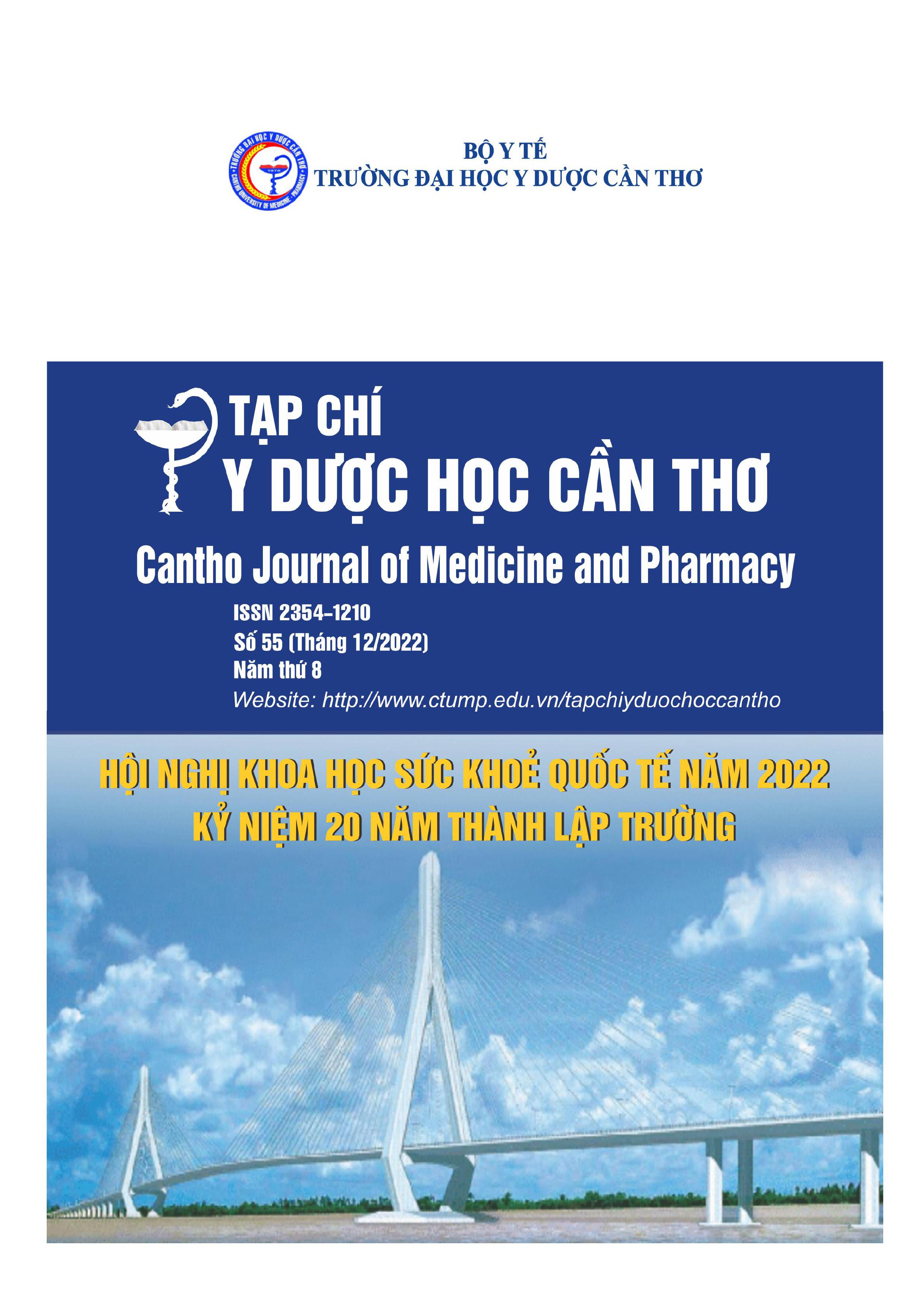THE CLINICAL AND ENDOSCOPIC CHARACTERISTICS OF THE PATIENTS WITH COLORECTAL DISEASES CONFIRMED AT CAN THO UNIVERSITY OF MEDICINE AND PHARMACY HOSPITAL
Main Article Content
Abstract
Background: Several colonic diseases, including colon polyps, ulcerative colitis, and colorectal cancer, are detected by colonoscopy. Every year, many patients come to the Can Tho University of Medicine and Pharmacy Hospital for examination, treatment and colonoscopy. Therefore, we want to build a colonic disease pattern for patients who underwent colonoscopy at the Can Tho University of Medicine and Pharmacy Hospital. Objectives: To describe the clinical characteristics, the prevalence of colonic pathologies, and the relationship between clinical symptoms and endoscopic findings in patients who underwent colonoscopy at the Can Tho University of Medicine and Pharmacy Hospital. Materials and methods: A cross-sectional descriptive study was conducted on 1183 patients who underwent colonoscopy at Can Tho University of Medicine and Pharmacy Hospital in 2021. Results: Of the 1183 patients who underwent colonoscopy, 31.9% had normal colonoscopic results. The common colonoscopic findings were polyps (30.9%), ulcerative colitis (11.7%), colon cancers (7.9%) and diverticula (4.2%). The age group was related to colon polyps, ulcerative colitis, and colon cancer. The abdominal pain symptom was associated with colon cancer. Changes in bowel habits and stool disorders were linked to ulcerative colitis and colon cancers. Conclusion: Colonoscopy is necessary for patients ≥40 years old with abdominal pain and stool disorders to detect colonic diseases early.
Article Details
Keywords
Colon diseases, colonoscopy
References
2. Vũ Văn Khiên, Khúc Đình Minh (2007), “Hiệu quả điều trị 40 trường hợp viêm loét đại trực tràng tại bệnh viện trung ương quân đội 108”, Tạp chí y dược lâm sàng, 1 (2), tr.38-42.
3. Hoàng Đăng Mịch, Lê văn Thiệu (2010), “Nhận xét một số bệnh thường gặp ở đại trực tràng qua 1402 trường hợp nội soi”, Tạp chí Y học Việt Nam tháng 2, tập 365 (1), tr.41-44.
4. Lê Quang Nghĩa, Nguyễn Thúy Oanh (2003), “Kết quả chẩn đoán 173 trường hợp ung thư qua nội soi đại tràng bằng ống mềm”, Tạp chí Y học TPHCM, tập 7(1), tr.148-154.
5. Huỳnh Hiếu Tâm, Nguyễn Lê Trang Vy (2014), “Đặc điểm lâm sàng và hình ảnh nội soi của bệnh lý đại tràng ở bệnh nhân đến khám tại bệnh viện trường Đại học Y dược Cần Thơ”, Tạp chí Y học thực hành số 944, tr.370-373.
6. Lê Văn Thiệu, Phạm Văn Nhiên (2011), “Nhận xét 4500 trường hợp nội soi đại tràng tại Bệnh viện Việt Tiệp Hải Phòng”, Hội nghị khoa học Bệnh viện Hữu Nghị Việt Tiệp lần thứ 37, tr.56- 60.
7. Aghdaei H.A et al. (2017), "Polyp detection rate and pathological features in patients undergoing a comprehensive colonoscopy screening", World journal of gastrointestinal pathophysiology,
8(1), pp.3-10.
8. Hiroshi N, Motoi U, Shinichiro S (2021), “Evidence-based clinical practice guidelines for inflammatory bowel disease 2020”, J Gastroenterol, 56, pp.489-526.
9. Sung H et al. (2021), "Global cancer statistics 2020: GLOBOCAN estimates of incidence and mortality worldwide for 36 cancers in 185 countries", CA: a cancer journal for clinicians. 71(3), pp.209-249.


